Blog
Steering Committees in Project Management: Their Role, Functions, and Best Practices
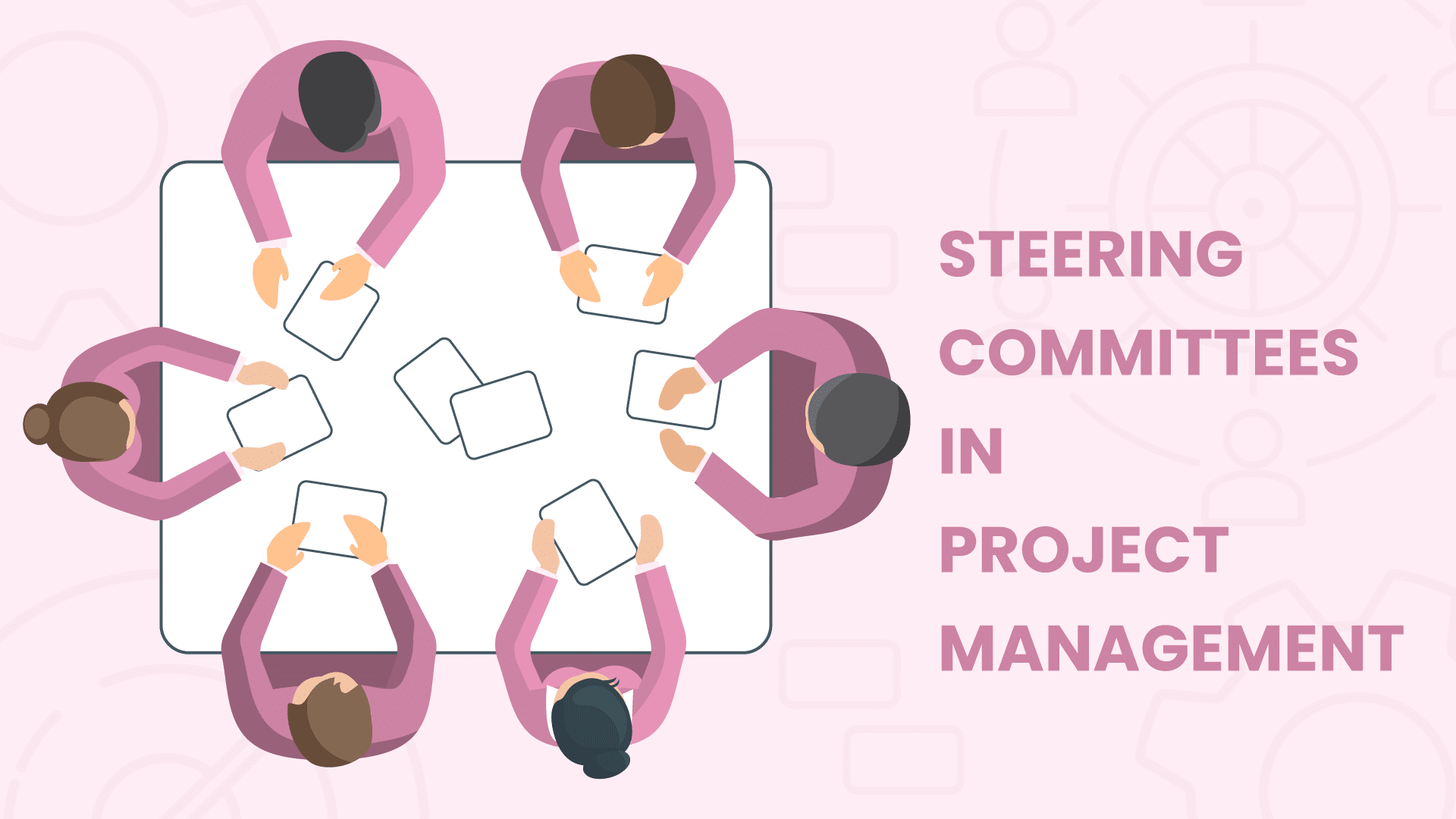
In this comprehensive guide, we’ll explore the critical role of steering committees within the realm of project management and organizational leadership. Offering insight into their definition, key functions, responsibilities, the composition of members, their governing charter, and established best practices, our aim is to equip you with a comprehensive understanding of how these committees significantly influence project success and governance. Through this article, you’ll learn about the indispensable role steering committees assume in steering projects towards their strategic goals.
Defining the Steering Committee
A project management steering committee is a group of highly experienced and authoritative individuals who provide valuable guidance and strategic direction to an organization or a specific segment within it. This committee is responsible for ensuring that the organization’s operational activities remain aligned with its overarching goals and objectives.
For instance, the primary role of a steering committee is to ensure that all IT projects undertaken by an organization not only support but also actively drive the achievement of the organization’s business goals and objectives. This crucial function encompasses decision-making, diligent oversight, and strategic planning.
In essence, a steering committee in the realm of project management serves as an advisory board with a governance role, whether it pertains to a company, a campaign, or any other endeavor. The composition of the steering committee is determined by the specific area it is tasked with steering. Typically, it consists of experts, authoritative figures, and senior stakeholders.
Functions and Responsibilities
Steering committees shoulder several critical functions and responsibilities that are essential for project success. Let’s explore these in detail:

1. Providing Strategic Direction
One of the primary functions of a steering committee is to provide strategic direction for projects. Committee members leverage their expertise to offer recommendations and ensure that projects align with the organization’s overarching goals and objectives.

2. Key Decision-Making
Steering committees possess the authority to decide on significant changes to a project’s scope, budget, or timeline, ensuring these adjustments align with strategic objectives and broader organizational goals. Through meticulous evaluation, they assess the impact and feasibility of proposed modifications, guaranteeing the project’s integrity and strategic direction are maintained. This capacity allows them to adapt to changing conditions while ensuring accountability and the project’s overall success.

3. Setting Project Timelines and Budgets
Steering committees are responsible for establishing project timelines with well-defined milestones and deadlines. Additionally, they play a vital role in setting and managing project budgets, ensuring financial resources are allocated efficiently.

4. Monitoring Project Quality
Steering committees identify and communicate quality standards to project teams to maintain project quality. They regularly audit these standards, track results, and make necessary adjustments to ensure that project deliverables meet required quality levels.

5. Evaluating and Managing Risks
Proactive risk assessment is another key responsibility of steering committees. By identifying potential risks, determining their likelihood and impact, and creating mitigation plans, they help safeguard the project against unexpected challenges.

6. Defining Project Outcomes
Steering committees define specific project outcomes that are measurable and aligned with organizational objectives. These outcomes serve as a compass, guiding the project towards its intended purpose and impact.
Steering Committee Members and Roles
A steering committee’s effectiveness depends on the diverse roles played by its members.
Let’s take a closer look at these roles:
- Board Officers: Supervise the organization’s activities and ensure alignment with strategic goals.
- Senior Stakeholders: Including sponsors and senior management, they make critical decisions regarding project direction and priorities.
- Experts: Contribute specialized knowledge to guide projects towards success.
- Executives: Oversee project management and are responsible for the organization’s operations.
- Department Employees: Bring valuable insights and perspectives to the committee.
- Client Representatives: Responsible for managing projects on behalf of clients and ensuring alignment with client expectations.
Crafting a Steering Committee Charter
Before establishing a steering committee, creating a comprehensive charter is essential. A well-crafted charter outlines the committee’s mission, structure, roles, and operational procedures.
Let’s explore the key components of a steering committee charter:
- Mission Statement: The mission statement succinctly defines the committee’s purpose and overarching goals.
- Committee Membership: This section specifies the committee’s composition, including member roles, terms, and responsibilities.
- Roles and Responsibilities: Clear definitions of each member’s role within the committee help prevent conflicts and confusion.
- Committee Organizational Information: This section outlines the committee’s structure, meeting frequency, and decision-making processes.
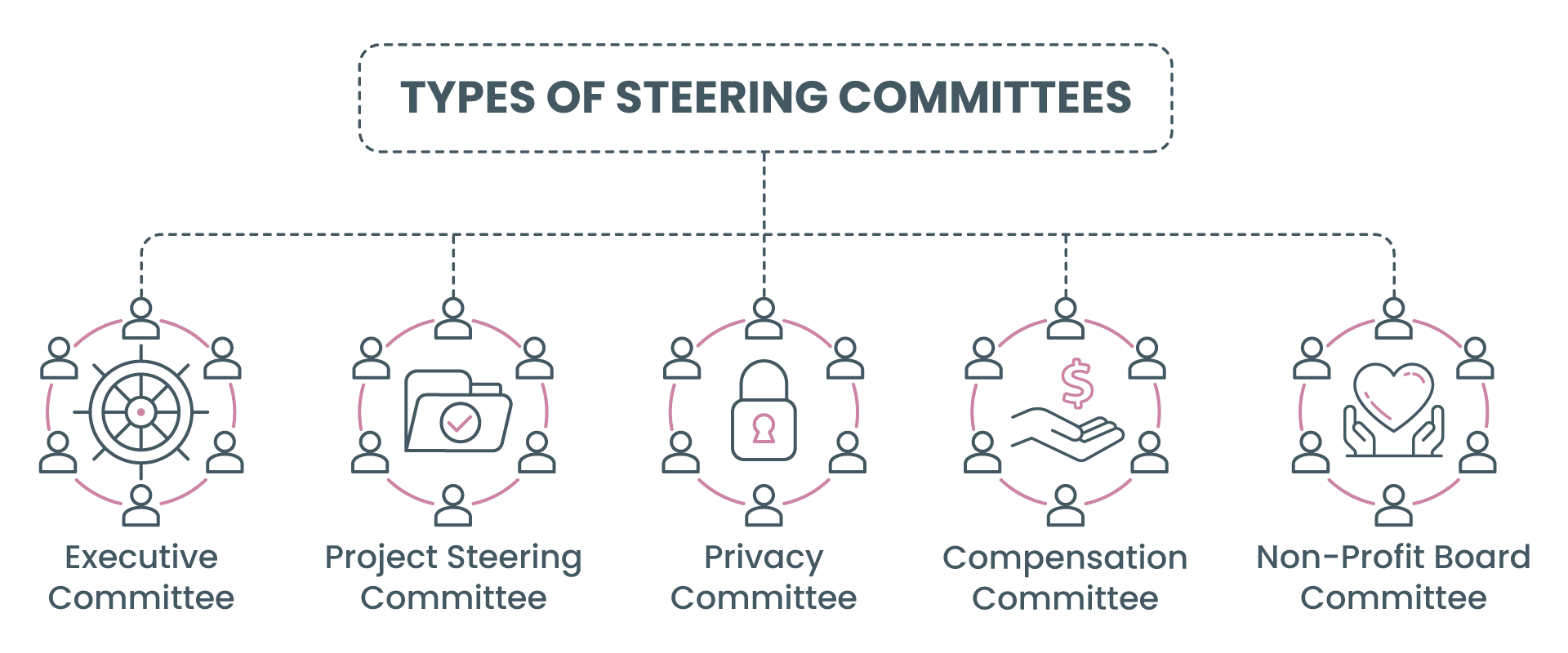
Examples of Steering Committees
Steering committees are not one-size-fits-all; their composition and functions vary based on organizational needs. Here are some common types of steering committees found in both non-profit and private corporations:
1. Executive Committee
An executive committee often comprises board officers and executive directors. It guides the overall direction of the board, sets agendas, and collects reports from other committees and board members.
2. Project Steering Committee
This type of committee collaborates on project-related decisions, supporting project managers in aligning projects with business objectives. It monitors risks, ensures project quality, and approves changes in scope, budget, and strategy.
3. Privacy Committee
Privacy committees ensure organizational compliance with data privacy and security regulations, such as GDPR. They work with stakeholders and subject matter experts to uphold data privacy standards.
4. Compensation Committee
Both corporate boards and non-profits often establish compensation committees. These committees oversee executive compensation and benefits packages, ensuring representation from diverse business and industry backgrounds.
5. Non-Profit Board Committee
Non-profit organizations benefit from board committees that streamline processes, offering support in strategic planning, budgeting, and project management.
Running Effective Steering Committee Meetings
Conducting steering committee meetings efficiently is crucial for achieving project goals.
Here’s a step-by-step guide on how to run effective steering committee meetings:

1. Agenda Preparation
- Set a clear agenda that includes project progress, budget updates, achievements, work in progress, and critical issues.
- Distribute the agenda and relevant materials to committee members at least seven to ten days before the meeting.

2. Meeting Facilitation
- Designate a meeting leader to welcome members, facilitate introductions if necessary, and guide the discussion.
- Present project updates, financial information, and address any questions or concerns.

3. Q&A Session
- Allow time for committee members to ask questions and seek clarification on presented information.
- Ensure that answers provided are clear and concise.

4. Decision-Making
- If the meeting’s goal is to make decisions, engage committee members in the decision-making process.
- Express gratitude to all participants, even in the event of conflicts, to maintain a positive atmosphere.

Best Practices for Steering Committees
To ensure the success of steering committees, consider implementing these best practices:
- Promote collaboration, cooperation, and communication: Building a strong foundation of open communication, cooperation, and collaboration among committee members is paramount. This creates a positive and trusting environment where members can freely exchange ideas, share insights, and work together harmoniously. Effective communication ensures that everyone is on the same page, fostering unity and synergy within the committee.
- Define clear roles and responsibilities: Clarity is key when it comes to defining the roles and responsibilities of committee members. Clearly outlining what is expected of each member ensures that everyone understands their role within the committee. This not only eliminates ambiguity but also prevents potential conflicts arising from overlapping responsibilities.
- Training for new members: Welcoming new committee members with training and coaching can significantly enhance their ability to contribute effectively. This onboarding process equips them with the necessary knowledge and understanding of their roles, the committee’s objectives, and its operational procedures.
- Maintain a manageable committee size: Steering committees function most efficiently when they strike the right balance in terms of size. Generally, a committee comprising around six members is considered optimal. This size allows for diverse perspectives while ensuring that the group remains agile and able to make decisions swiftly.
- Thorough preparation: Meetings play a pivotal role in the functioning of steering committees. Thorough preparation for these meetings is crucial. This includes setting clear agendas that outline the topics to be discussed, providing relevant materials well in advance, and attaching minutes and action lists from previous meetings. Such preparation ensures that committee members are well-informed and ready to engage constructively.
- Utilize project management tools: Leveraging project management tools enhances the efficiency and effectiveness of steering committees. These tools provide a centralized platform for overseeing project and portfolio progress, facilitating communication, tracking tasks and milestones, and generating reports. By utilizing such tools, steering committees can streamline project management processes, improve decision-making, and ensure alignment with organizational goals.
- Establish ongoing communication: Steering committees benefit from establishing benchmarks and facilitating ongoing communication between formal meetings. Regular updates and progress reports help track the committee’s achievements, monitor project developments, and address any emerging issues promptly. This continuous communication ensures that the committee remains proactive and adaptable, responding effectively to changing circumstances.
Conclusion
Steering committees are the backbone of successful project management and organizational governance. Organizations can leverage steering committees to achieve project objectives and align with strategic goals by defining their functions, roles, responsibilities, and best practices. Understanding the pivotal role of steering committees is key to driving efficiency and productivity in today’s dynamic business landscape.













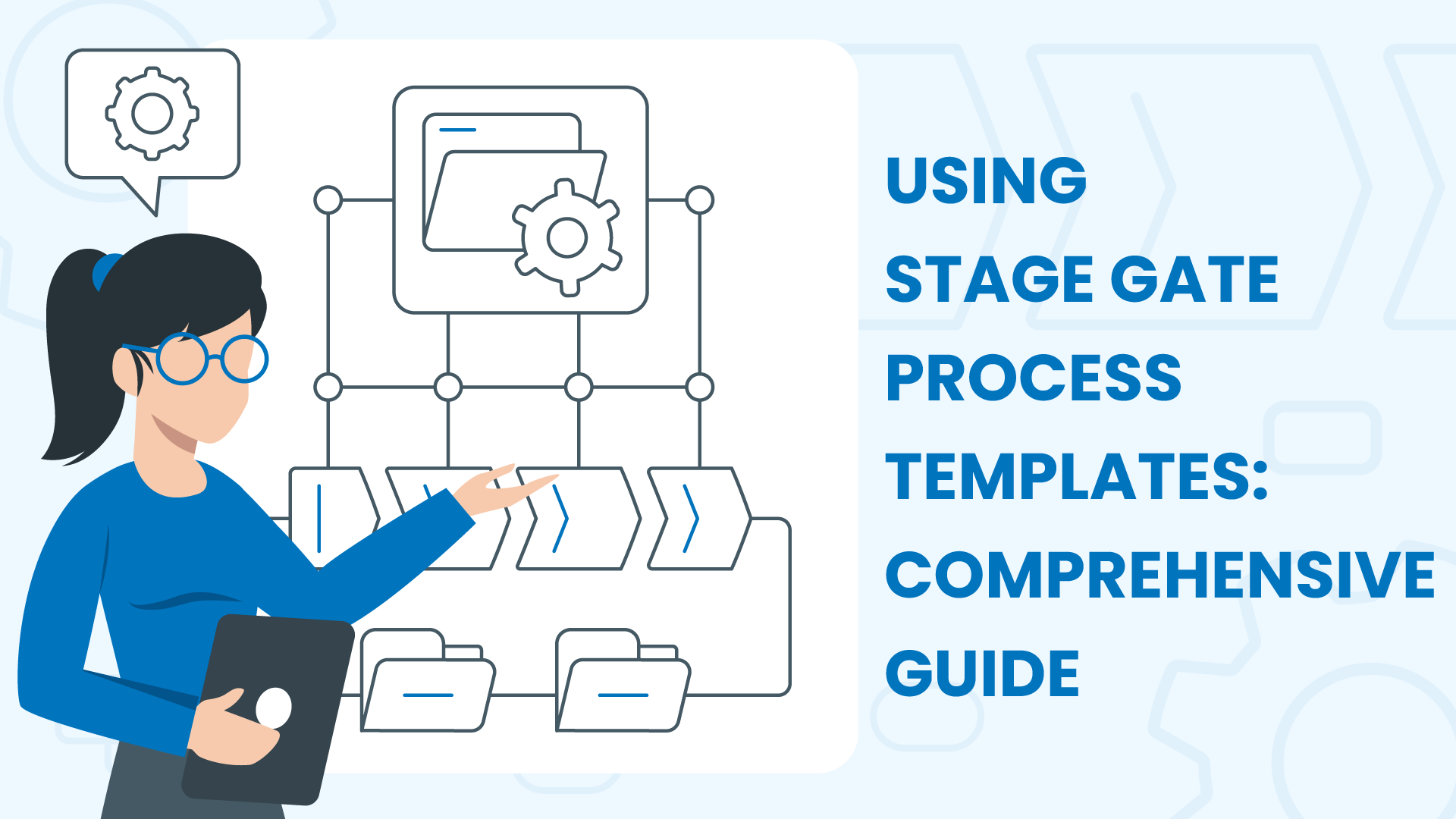









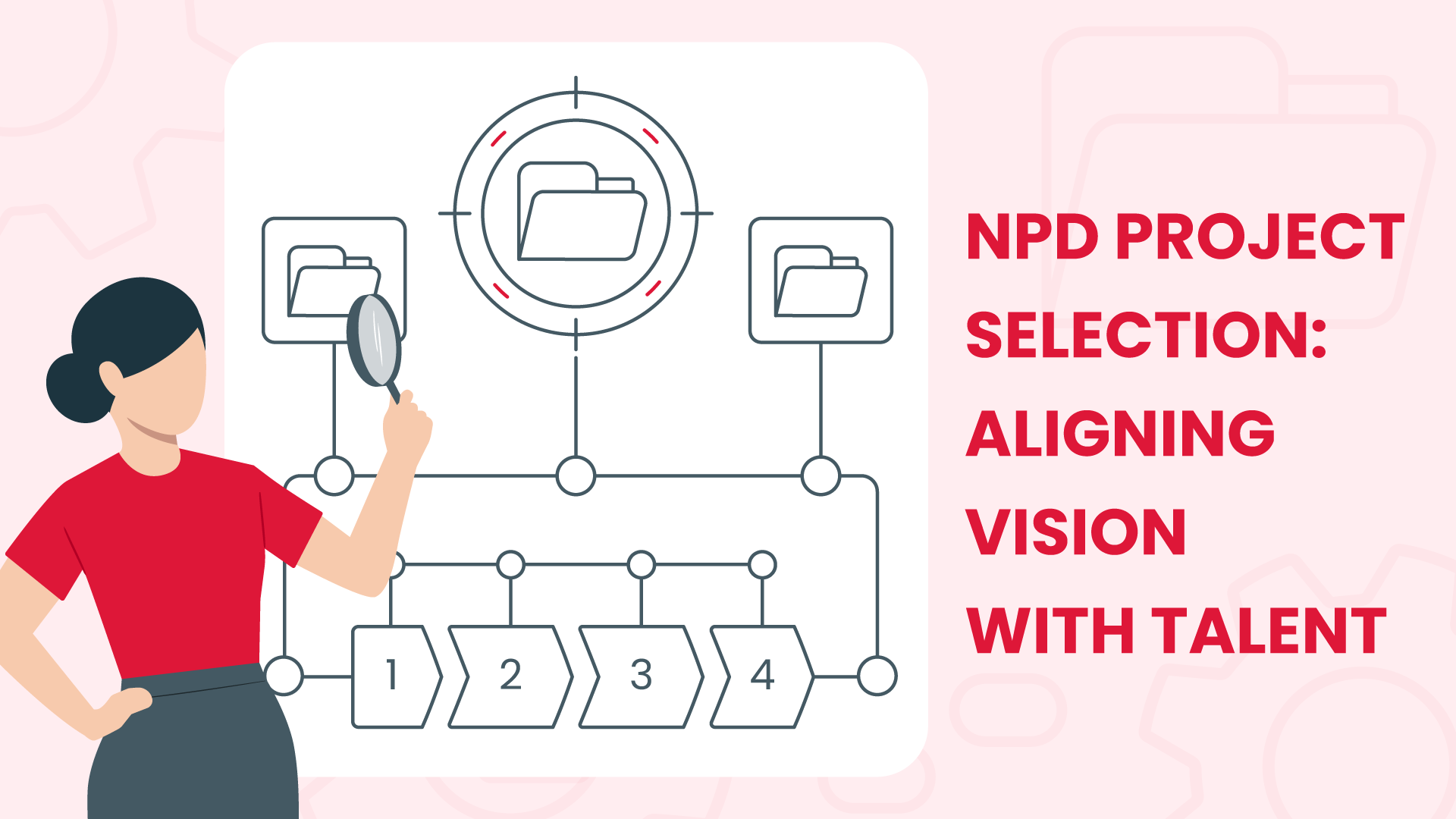













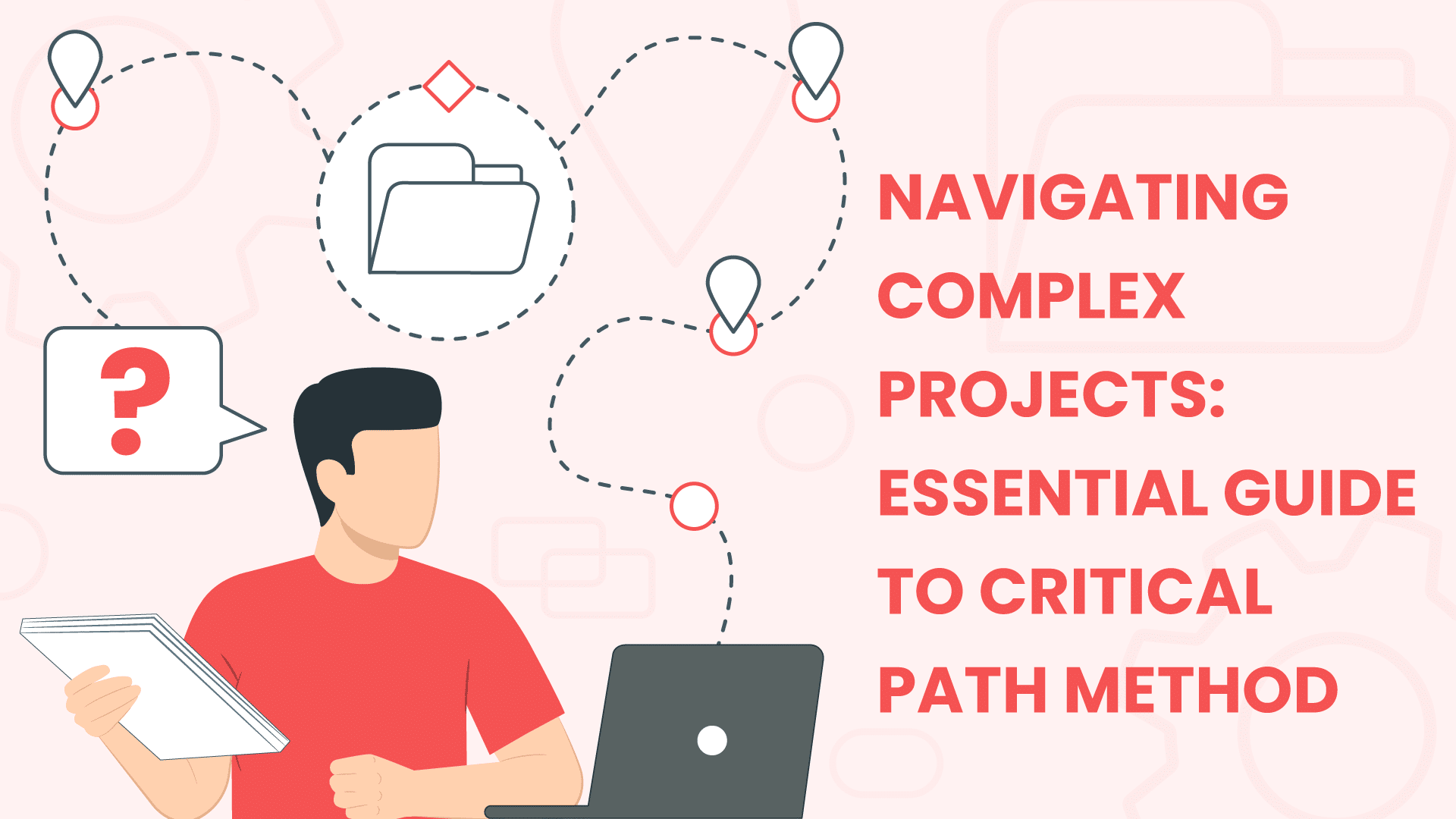


















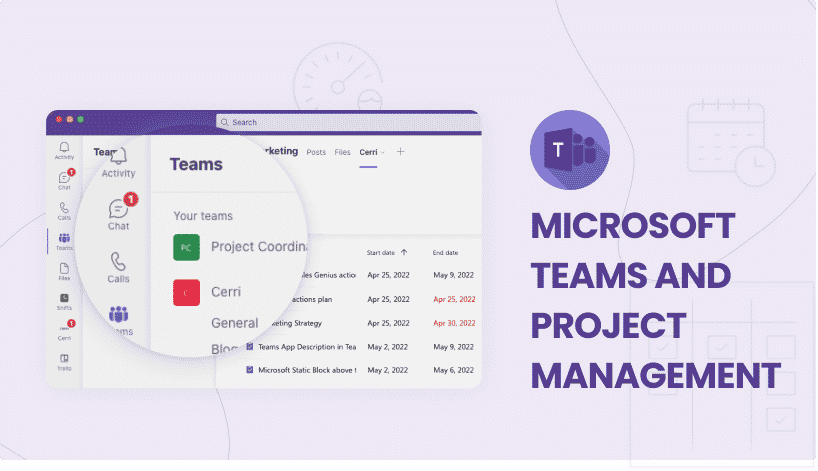













 Task Management
Task Management 

















 Customization
Customization
